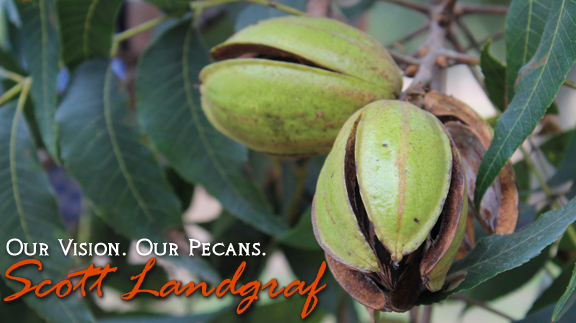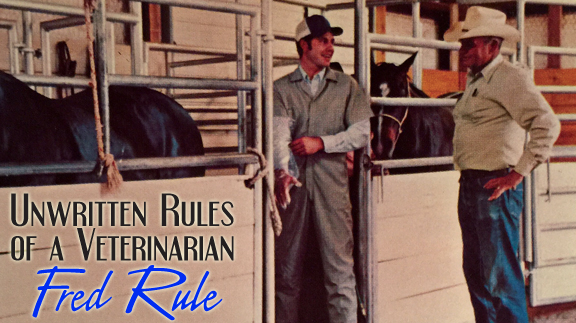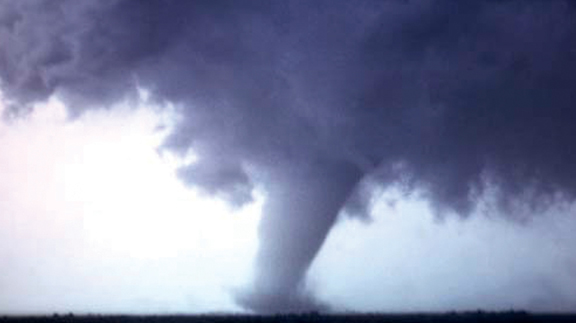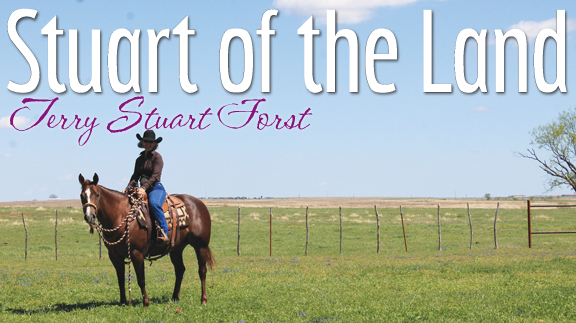Home
The Endurance of Conservation Districts
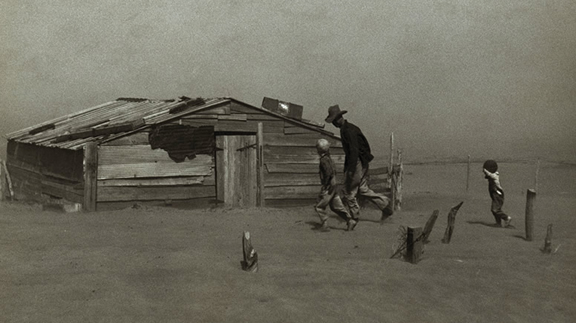
By Sarah Blaney
“In this democracy, national action to conserve soil must be generated by these millions of land users. If they are active and willing participants in such a movement, it will endure; otherwise it will fail,” said Hugh Hammond Bennett, founder of the Soil Conservation Service now the Natural Resources Conservation Service.
For 80 years, Oklahoma landowners have been active and willing participants in a grassroots movement to preserve our soil and water.
This movement of locally led, voluntary, incentive based conservation has endured only because of the commitment and vision of farmers and ranchers who were willing to work with nature. This is the history of that movement.
Prior to the formation of Oklahoma’s statehood in 1907, the western part of our state was a sea of native grassland. The soils underneath the grasses were fertile. Settlers came from the eastern United States to Oklahoma to farm these fertile soils. These farmers were encouraged to plow up the native grasses and plant wheat, cotton, corn and even potatoes. They did not realize that though the soil was fertile, it was sandy and highly susceptible to erosion.
Oklahoma was and continues to be a land of fierce wind with long periods of dry spells. The natural state of the soils coupled with bad farm policy led to the “the worst man-made ecological disaster in American history;” the Dust Bowl.
The Dust Bowl has become the term to describe a period in American history where a combination of drought, exposed soil, and high winds caused the worst erosion that the United States has ever seen. To make matters worse, there were also periods of extreme flooding. For example in 1934, 17 people died after heavy rainfall caused the Washita River in Roger Mils County to flood. During this time period, many farmers could not raise enough food to feed even their own families. It is estimated that more than 70,000 people left Oklahoma during the 1930s. The ones who remained used their experience during the Dust Bowl to form a better, more sustainable relationship with the land.
Throughout this time period, there was important work being done to mitigate water and soil erosion. In 1929, the first erosion control experiment station in the United States was established near Guthrie, Okla. This demonstration site measured soil loss on different management practices and helped show farmers the results of those practices. This demonstration work was expanded and farmers volunteered to participate and try different practices such as terracing and contour farming.
While the demonstration work was impactful and important, it was led by the federal government. It became apparent that in order for there to be lasting change, the support of local farmers was critical. In 1937, President Franklin Roosevelt encouraged all states to adopt a model of legislation that would allow farmers and ranchers to form their own local units of government known as “soil conservation districts.”
Local farmers and ranchers would serve as the governing body for these districts and would determine their own water and soil conservation needs and priorities. To form a soil conservation district, citizens were required to gather a minimum of 25 signatures from their peers. That was not a problem for Oklahomans. On March 22, 1938, the McIntosh County Soil Conservation District was the first district formed in Oklahoma. By November 1938, Oklahoma had 24 soil conservation districts.
These early districts focused on educating farmers about different farming methods such as contour farming and terraces instead of straight row farming. They used demonstrations to show how different management practices affected soil and water erosion. Districts encouraged the building of ponds so producers would have surface water during times of drought. Districts were also active in flood control work on watersheds. This work included establishing small dams with conservation practices like grass plantings above the dams to reduce run-off. No federal funding was available for the dams during the early years. However, when federal funding became available in 1948, Oklahoma was the first state to receive funding for the Cloud Creek Watershed Dam in Washita County, Okla.
Today, every inch of Oklahoma is covered by a conservation district. Oklahoma has 84 state-appropriated conservation districts and one tribal conservation district. The districts are still governed by local farmers and ranchers who set the natural resource concerns and priorities for their own community. These conservation districts work every day to provide education, encourage the adoption of conservation practices through cost share programs, and showcase demonstrations of new conservation practices to their community.
Today, conservation districts continue to keep property and lives safe by operating and maintaining 2,107 upstream flood control structures.
The conservation district movement has endured and will continue to endure because of the continued commitment of local farmers and ranchers to continually learn and adapt to their natural surroundings.
Home
Simple and Effective Ways to Reduce Reliance on Public Utilities

In today’s world, our reliance on public utilities such as electricity, water, and natural gas is undeniable. However, there is a growing movement towards greater self-sufficiency and sustainability. Many people are exploring ways to reduce their dependence on these public services, both to save money and to contribute to a more sustainable future. In this article, we’ll discuss some simple yet effective ways to reduce reliance on public utilities.
1. Generate Your Own Electricity
Generating your own electricity is one of the most significant steps towards reducing reliance on public utilities. Here are some options to consider:
Solar Panels: Installing solar panels on your roof or property can harness the power of the sun to generate electricity. Solar energy systems can provide a significant portion of your electricity needs and often come with government incentives and tax benefits.
Wind Turbines: If you have a suitable location, small wind turbines can generate electricity from wind power. Wind energy can be an excellent complement to solar panels, especially in windy areas.
Backup Generators: While not a primary source of electricity, backup generators, such as those powered by propane or natural gas, can provide power during outages and reduce your reliance on the grid.
2. Use Energy-Efficient Appliances
Upgrading to energy-efficient appliances can significantly reduce your electricity consumption. Look for Energy Star-rated appliances, LED lighting, and smart thermostats that help you manage and reduce energy use.
3. Invest in Insulation and Weatherization
Proper insulation and weatherization of your home can help maintain a comfortable temperature year-round, reducing the need for heating and cooling. Seal gaps and cracks in your home’s structure, add insulation in attics and walls, and consider energy-efficient windows and doors.
4. Collect Rainwater
Installing a rainwater harvesting system allows you to collect and store rainwater for non-potable uses, such as watering your garden or flushing toilets. This reduces your reliance on municipal water supplies, especially during droughts.
5. Compost and Reduce Food Waste
Reducing food waste not only saves money but also reduces the energy and resources needed to produce and transport food. Composting kitchen scraps and yard waste can help enrich your soil, reducing the need for chemical fertilizers.
6. Install Low-Flow Fixtures
Low-flow showerheads, faucets, and toilets can significantly reduce water usage without sacrificing functionality. These fixtures reduce water bills and ease the demand on public water supplies.
7. Practice Off-Peak Energy Use
Many utility companies offer off-peak rates, where electricity is cheaper during specific hours. Shift energy-intensive tasks like laundry and dishwashing to these off-peak hours to save money.
8. Reduce Water Heater Temperatures
Lowering the temperature of your water heater can reduce energy consumption. Most households don’t need scalding hot water, and a moderate temperature is often sufficient for daily use.
9. Switch to Propane or Natural Gas
In some cases, switching to propane or natural gas appliances can be more energy-efficient and cost-effective than electric alternatives. For example, propane-powered stoves and water heaters can provide efficient heating.
10. Install Energy-Efficient Windows and Doors
If you’re considering home renovations, invest in energy-efficient windows and doors. These can better insulate your home, reducing the need for heating and cooling.
11. Create an Energy-Efficient Landscape
Planting trees and shrubs strategically around your home can provide shade in the summer and windbreaks in the winter, reducing the need for heating and cooling.
12. Learn Basic Home Repairs
Knowing how to perform basic home repairs can help you maintain your home’s systems more efficiently. Simple tasks like fixing leaky faucets, insulating pipes, and sealing drafts can make a significant difference.
13. Consider Alternative Transportation
Reducing your reliance on public utilities extends to your transportation choices. Consider walking, biking, carpooling, or using public transportation to reduce fuel consumption and emissions.
14. Invest in Energy Storage
Battery technology has advanced, making it possible to store excess electricity generated by solar panels or wind turbines. These batteries can provide power during outages or during peak demand times when electricity prices are high.
15. Educate Yourself
Staying informed about energy-efficient practices and technologies is essential. Consider taking courses, attending workshops, or reading books and articles on sustainability and self-sufficiency.
Reducing reliance on public utilities is a journey that involves a combination of lifestyle changes, home improvements, and technology adoption. While it may not be feasible or practical for everyone to completely disconnect from public services, even small steps can lead to significant reductions in utility bills and environmental impact. Whether you choose to generate your own electricity, conserve water, or practice energy-efficient habits, every effort contributes to a more sustainable and self-reliant future. Ultimately, these changes not only benefit your wallet but also help preserve our planet for future generations.
Home
Butter Pecan Ice cream
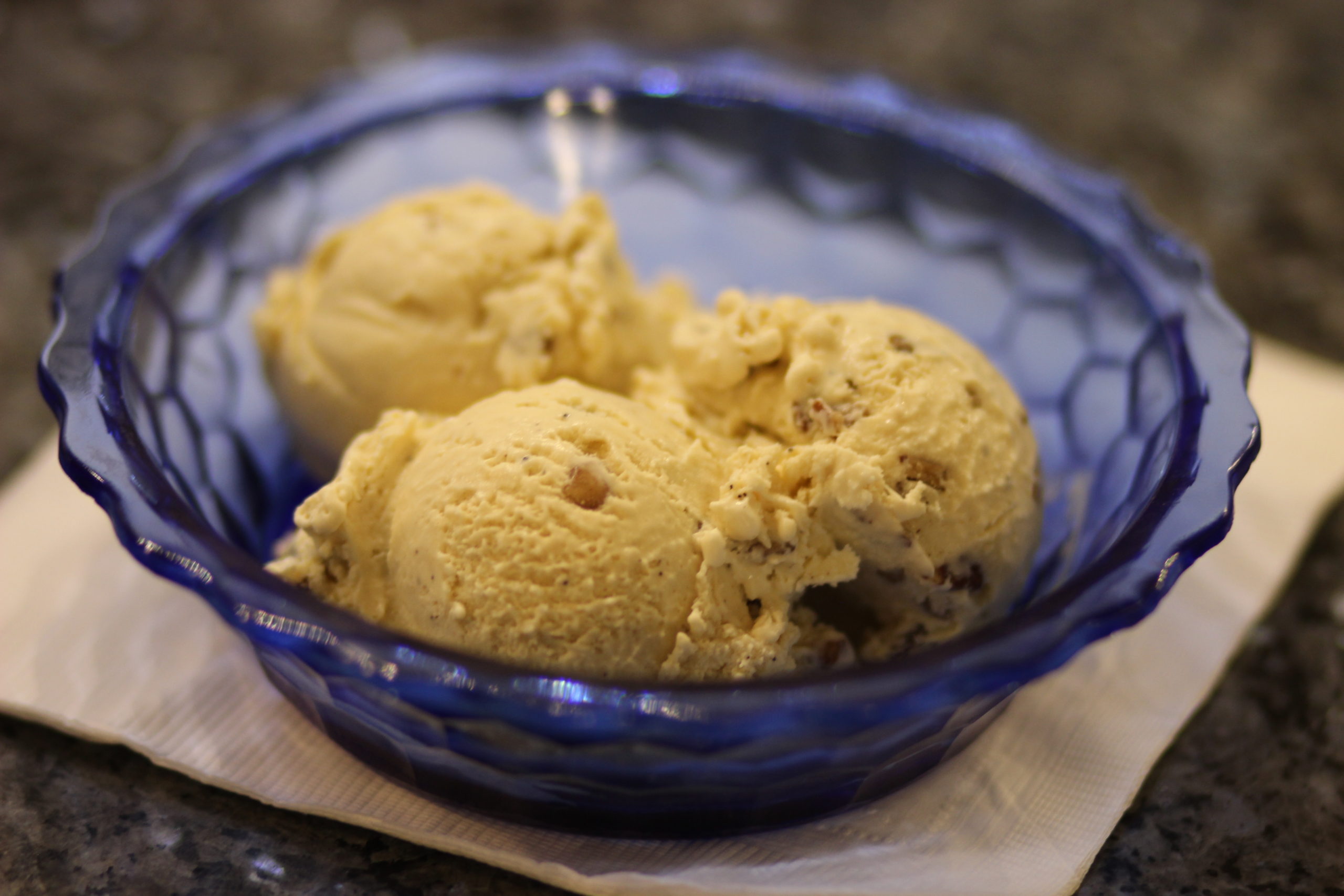
Total Time: 4 hours
Yields: 1 1/2 Quarts
- Ice cream base:
- 6 large egg yolks
- 6 tablespoons unsalted butter
- 1 cup brown sugar
- 1/4 teaspoon salt
- 2 cups heavy cream
- 2 cups whole milk
- 1 teaspoon vanilla extract
- Pecans:
- 1 cup pecans
- 1 tablespoon unsalted butter
- Pinch salt
- Instructions:
- In a medium sized heat-safe bowl, whisk together the egg yolks until well blended. Add brown sugar and salt and mix until incorporated. Set aside.
- Pour the cream into a metal bowl set in a larger bowl of ice and set a medium-mesh sieve on top. Set aside.
- In a medium, heavy-bottomed saucepan on medium heat, melt the butter and cook it, stirring constantly, until it just begins to brown.
- Slowly add the milk, stirring to incorporate. It will foam up initially, so make sure you are using a pan with high enough sides. Do not let boil or the mixture may curdle.
- To temper the eggs, slowly pour half of the milk and butter mixture into the eggs, whisking constantly to incorporate.
Then add the warmed egg mixture back into the saucepan with the remaining milk and butter mixture.
- Stir the mixture constantly over medium heat with a wooden or heatproof rubber spatula, scraping the bottom as you stir, until the mixture thickens and coats the spatula, about 5-7 minutes.
- Add vanilla and stir until cool over the ice bath. Chill thoroughly in the refrigerator.
- While the mixture is chilling, preheat the oven to 350°F. Melt 1 tablespoon of butter. Toss with pecans and a pinch of salt. Spread pecans out on a rimmed baking sheet and bake at 350°F for 10 minutes, until the pecans are lightly toasted. Set aside to cool. Once cool, roughly chop the pecans and set aside.
- Once the ice cream mixture is thoroughly chilled, churn in your ice cream maker according to the manufacturer’s instructions.
- Once the ice cream has been formed in the ice cream maker, it will be fairly soft. Fold in the chopped pecans.
- Put in an airtight plastic container and place in the freezer for at least an hour, preferably several hours. If it has been frozen for more than a day, you may need to let it sit at room temperature for a few minutes to soften it before serving.
Home
Valentine’s Crack

Servings: 30
Total
Time: 13 minutes
- 50 Saltine Crackers
- 1 Cup butter cut into chunks to melt down, 2 sticks
- 1 Cup LIght Brown Sugar
- 2 Cups White Chocolate Chips
- 1/4 Cup Pink Chocolate Melts
- Valentine’s Sprinkles
Ingredients:
- Preheat oven to 325 degrees. Line a large cookie tray with aluminum foil. Spray with cooking spray. Line saltines up neatly in rows.
- In a medium sized pot melt your butter and brown sugar. Once butter is melted down, bring to a boil. Continue to stir the entire time and boil for about 2 minutes. It will look bubbly and look like caramel.
- Pour over the top of the saltines. Gently spread across the saltines.
- Place in oven and bake for about 7 minutes.
- While in the oven melt your pink chocolate melts according to package directions.
- Remove the pan from the oven and then sprinkle your white chocolate chips over the saltines. Your hot toffee mixture will melt the chips. You can put it back in the oven for a minute to move the process along. Once your chips are melting, spread across the top evenly with a spatula.
- Mix your pink chocolate into the white chocolate by pouring it over the top in a decorative way. You can use a knife tip to help combine colors to your liking. Quickly decorate with sprinkles, the melted chocolate will act as your glue.
- Once chocolate is completely hardened you are ready to serve.
-

 Attractions8 years ago
Attractions8 years ago48 Hours in Atoka Remembered
-

 Country Lifestyle10 months ago
Country Lifestyle10 months agoJuly 2017 Profile: J.W. Hart
-

 Country Lifestyle9 years ago
Country Lifestyle9 years agoThe House a Treasure Built
-

 Country Lifestyle4 years ago
Country Lifestyle4 years agoThe Two Sides of Colten Jesse
-

 Outdoors7 years ago
Outdoors7 years agoGrazing Oklahoma: Honey Locust
-

 Equine8 years ago
Equine8 years agoUmbilical Hernia
-

 Outdoors5 years ago
Outdoors5 years agoPecan Production Information: Online Resources for Growers
-

 Farm & Ranch7 years ago
Farm & Ranch7 years agoHackberry (Celtis spp.)


